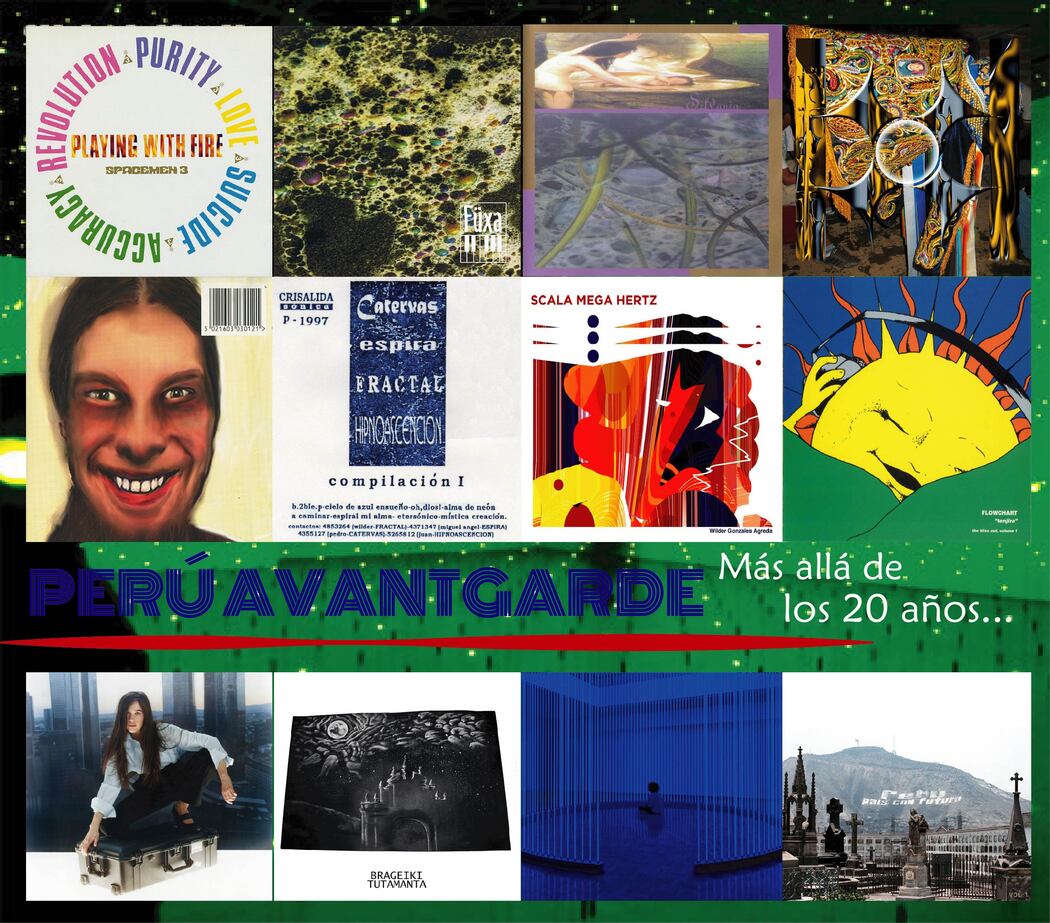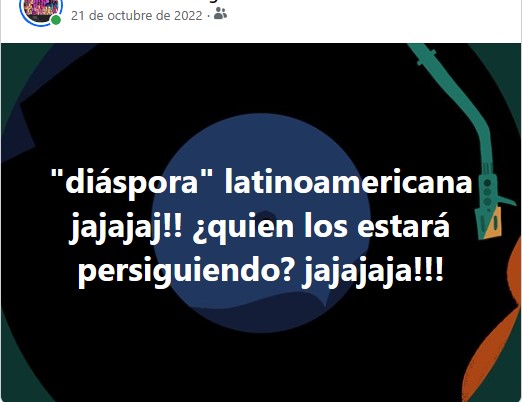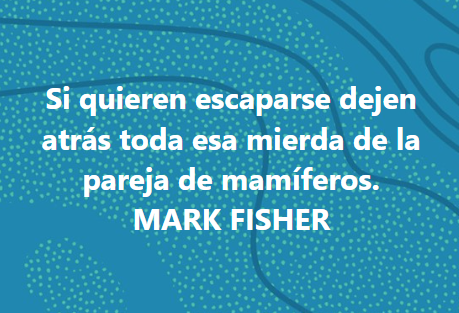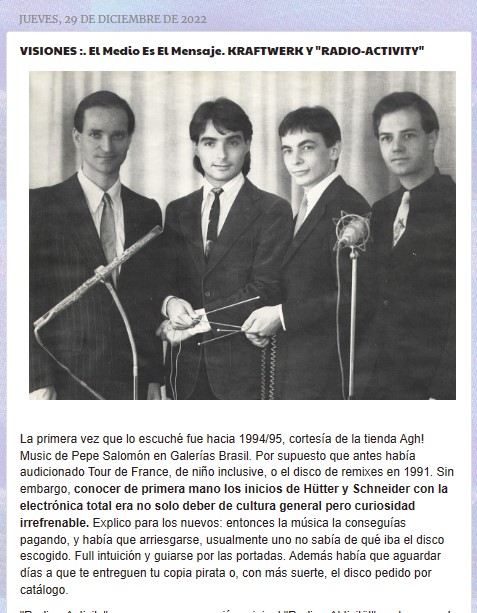Pete Bassman: Lost in Space (2016): pinceladas desde el espacio exterior.
El espacio sideral se abre para dejarnos percibir esta suntuosa obra atmosférica, electrónica y psicodélica que reafirma la presencia de estos sonidos astrales, evidenciando su buena salud y forma.
Primer disco en solitario del ex - bajista de SPACEMEN 3, luego de conformar THE DARKSIDE y ALPHA STONE. “Perdido en el espacio” salió publicado a principios de Junio por el sello sueco HÖGA NORD REKORDS.
En “Lost in Space” Bassman ejercita diversos artificios eléctricos, desde el empleo maestro del teclado como de la guitarra que en su conjunción conforman un todo de neo psicodelia electrónica, con melodías hipnóticas y minimalismo espacial.
Siempre con la percusión eléctrica abanderando el ritmo y oxigenando a esas atmósferas provocadas por el teclado certero y multiforme. Como si de un viejo ritual se tratara, cada tema está dotado de personalidad propia a pesar de la aparente misma fórmula compositiva. Las piezas son en su mayoría instrumentales aunque hay cuatro de las diez que incluyen algunas voces.
Estas vocalizaciones habladas o cantadas a la usanza de ALPHASTONE acompañan las repetitivas melodías con curiosa sofisticación. También hacen recordar estos temas a STEREOLAB en su faceta más space rock.
La vibración neo psicodélica de Rugby UK, continúa hoy después de aproximadamente 25 años con la consecuente evolución pertinente pero con la misma medicina sonora para todos sus seguidores.
Estos 10 temas que conforman el susodicho título: “Perdido en el espacio”, mantienen cierto paralelismo con la misma línea creativa que Bassman mostraba en ALPHASTONE. Aunque valgan verdades está fuertemente influenciada por actos como FÜXA y FLOWCHART.
A continuación analizamos el “Lost in space” tema por tema:
-Music for modern living (Música para la vida moderna): Bien al estilo FÜXA, la apertura del álbum ofrece pulcras sonoridades evocando viajes-desplazamientos espaciales, y como encantamientos o hechizos electrónicos en el profuso detallismo de sus arreglos.
-Fast fluing fluid (Fluido fluyente veloz): como un abismo blanco en el que somos sumergidos mientras nuestros oídos rebosan de efectos siderales y de una especie de lluvia estelar, mientras la guitarra minimal va dirigiendo el viaje hacia el infinito.
-Wolf Eater (Come lobos): la cualidad pop de este tema contrasta con el cariz especial que goza este track guiado por la guitarra y adornado por las locuaces frases vocales tanto al inicio del mismo como al final.
-Fabrik: Esta pieza comienza estructurándose con sonidos propios del ambient techno (recordando a algunos momentos de TO ROCOCO ROT) para luego crecer hacia una suerte de pop espacial. La percusión se encarga del ritmo acuciante. Pieza llena de detalles y efectos electrónicos acompañando la base atmosférica.
-Sweet 16 (Dulce 16): Este track emerge con percusión eléctrica y unos silbatos mundanos que no tardan en transformarse y dar pie a ese ambiente cósmico propio de algunas canciones de bandas como STEREOLAB o FLOWCHART. Introduce vocalización femenina y continúa con el mismo patrón creativo de las piezas anteriores.
-Metallic decade (Década metálica): Se requiere precisión en la escucha para la distinción de los diversos matices sonoros. Esta pieza evoca en sus segundos iniciales una ignición total semejante a un viaje astral con gravedad en las visiones lleno de colores y texturas envolventes.
-Distant funk (Funk distante): nuevamente Bassman nos sorprende con su detallado dominio como teclista. Aumentando las capas de sonido y brindando diferentes sensaciones siempre espaciales y de efectos tecnológicos sobre un futuro, de repente no tan lejano.
-Echo lane (Carril eco): con un ritmo más pausado esta pieza va configurándose en el eco creciente y decreciente del sonido. Se genera un ámbito celeste que varía con cada nuevo artilugio sonoro que Bassman acota con prolijidad.
-Scars (Cicatrices): el tema más oscuro de todo el álbum. Por la voz utilizada parece por momentos invocar al mismísimo Ian Curtis de Joy Division, guardando las distancias. Aunque musicalmente ésta pieza usa un tempo menor en revoluciones. “I`ve got scars, baby I`ve got scars” entona Bassman arropado por los siempre hipnóticos y minimales acordes de teclado y guitarra.
-Let`s do it (Vamos a hacerlo): el riff de guitarra (reminiscente al Bassman de ALPHASTONE) con el que da comienzo y se mantiene hasta el final de este track se acompaña con unas vocalizaciones que se asemejan a conversaciones entre astronautas enzarzándose en una dialéctica telefónica que queda clara como colofón.
Si bien el disco es lanzado superada con creces la primera década del siglo XXI, rezuma en su esencia ineluctable los recordados noventas finiseculares. Procurando no caer en la perogrullada, el autor se trata de un componente irremplazable de los legendarios SPACEMEN 3 y corroboramos en este flamante documento musical la vigencia de ese sonido apto para los mejores vuelos sensoriales.
.\REVORDRIFT
Pete "Bassman" Bain drawing by Jason "Spaceman" Pierce circa 1984/85
Pete Bassman: Lost in Space (2016): brushstrokes from outer space.
Outer space opens to let us perceive this sumptuous atmospheric, electronica and psychedelic work that reaffirms the presence of these astral sounds, showing their good health and shape.
First solo album from ex - SPACEMEN 3 bass player, after forming THE DARKSIDE and ALPHA STONE. "Lost in Space" was released in early June by the Swedish label HÖGA NORD REKORDS.
In "Lost in Space" Bassman exercise various electrical devices, from the master use of the keyboard and the guitar that in their conjunction form a whole of electronic neo psychedelia, with hypnotic melodies and spacey minimalism.
Always championing electric percussion rhythm and oxygenating these atmospheres caused by the clever and multiform keyboard. Like an old ritual is involved, each piece is equipped with its own personality despite the apparent same compositional formula. The pieces are mostly instrumental although there are four of the ten including some voices.
These spoken or sung in the style of ALPHASTONE vocalizations accompany repetitive melodies with curious sophistication. Also remind these issues to STEREOLAB in their most space rock facet.
Neo psychedelic vibration from Rugby UK, continues today after about 25 years with the consequent relevant developments but with the same sound medicine for all its followers.
These 10 songs that make up the above title: "Lost in Space", keep some parallels with the same creative line that Bassman showed in ALPHASTONE. Although to be honest is strongly influenced by acts like FÜXA and FLOWCHART.
Following we discuss the "Lost in space" issue by issue:
-Music For Modern Living: Ala FÜXA style, the opening of the album features neat sounds conjuring trips-spacey shifts, and as charms or electronic spells in the profuse attention to detail of its arrangements.
-Fast Fluing fluid: as a white abyss in which we are immersed while our ears are full of sidereal effects and a kind of stellar rain, while the minimal guitar is directing the journey towards infinity.
-Wolf Eater: the pop quality of this piece contrasts with the special look that enjoys this track guided by the guitar and decorated by vocal phrases loquacious both at the beginning and end of it.
-Fabrik: This piece begins structuring with sounds features of ambient techno (remembering some moments of TO ROCOCO ROT) and then grow into a kind of space pop. The percussion is responsible for pressing rhythm. A piece full of details and electronic effects accompanying the atmospheric basis.
-Sweet 16: This track emerges with electric percussion and worldly whistles that soon transform and give rise to that same cosmic environment of some songs from bands like STEREOLAB or FLOWCHART. Introduce female vocals and continues with the same creative pattern of the earlier pieces.
-Metallic Decade: Precision is required in listening to the distinction of the various sound nuances. This piece evokes in its initial seconds like a total ignition similar to an astral journey with gravity in the visions full of colors and surrounding textures.
-Distant Funk: Bassman again surprises us with his detailed domain as a keyboardist. Increasing the layers of sound and always providing different sensations always spacey and technological effects about a future, suddenly not so distant.
-Echo Lane: with a slower pace this piece is configured in the increasing and decreasing echo sound. It's generated a celestial sphere that varies with each new sound device that Bassman narrows neatly.
-Scars: the darker theme of the whole album. For the voice used seems at times to invoke the very Ian Curtis of Joy Division, keeping distances. Although musically this piece uses a lower tempo in revolutions. "I`ve got scars, baby I`ve got scars" intones Bassman embraced by the ever hypnotic and minimal keyboard and guitar chords.
-Let`s Do it: the guitar riff (reminiscent of the Bassman from ALPHASTONE) with which starts and stays until the end of this track is accompanied by vocalizations that resemble conversations between astronauts embroiling in a telephone dialectic that is clear as colophon.
While the disc is thrown far outweighed the first decade of the century, its ineluctable essence seeps into the remembered fin-de-siècle nineties. Trying not to fall into the platitude, the author is an irreplaceable component of the legendary SPACEMEN 3 and we can corroborate in this brand new musical document the validity of that sound suitable for the best sensory flights.
.\REVORDRIFT
















No hay comentarios.:
Publicar un comentario